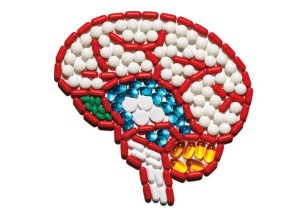By Deepak Chopra, M.D., FACP, and P. Murali Doraiswamy, MBBS, FRCP, Professor of Psychiatry, Duke University Medical Center, Durham, North Carolina
You may have noticed headlines about the rise of prescription drugs as a major cause of addiction and death by overdose. Pain pills are overshadowed by illegal drugs like heroin and their dangers masked by a certain air of respectability. Yet America is in the midst of an epidemic of painkiller overuse as well as addiction. As a nation we constitute only about 5% of the world’s population, but we consume some 80% of the prescription drugs called opioids, the strongest and most addictive pain pills, that go by names like Vicodin, OxyContin, Dilaudid, codeine, and Percocet. We consume 99% of the global supply of a particular opioid called hydrocodone, which is used in combination with other drugs for pain relief but also cough suppression. In 2014 the FDA approved a new version of a pure hydrocodone despite the objections of its own medical advisory panel (which voted 12 to 2 against approval) and 30 states. Today opioid overdose deaths (one every 30 minutes) exceed deaths from motor vehicle accidents as well as the combined total of deaths by heroin or cocaine overdose.
How did we get here? The pain-relieving properties of opium have been known for thousands of years, but because of its dangerous side effects and addictive properties, it has generally been reserved for more severe forms of acute pain. This changed in the mid-90s when doctors became more lax about prescribing opioids over a longer period of time. Pharmaceutical companies launched marketing campaigns, and medical use of opioids in the US increased tenfold over the next two decades. This was a gamble between relieving the pain of patients and the risk of overuse, a gamble that obviously hasn’t paid off. Mounting evidence suggests that long-term opioid drug use triggers a vicious circle of continued pain and addiction. Citing the predictability of such an outcome, some counties in California and Illinois have sued the makers of opioid drugs for misinformation campaigns.
Pain has become the most common reason that people see doctors–more than 100 million Americans are reported to suffer from chronic pain, a number that exceeds the combined total of people suffering from diabetes, heart disease, cancer, dementia and stroke. Is there another way to resolve chronic pain besides the disastrous course we’re on?
The first step toward an alternative is to view pain as a mind-body experience that is highly subjective. As such it can often be approached through a phenomenon called “self-efficacy.” The brain contains many pain-relieving chemicals, and these can be triggered mentally, which is why taking a placebo leads to pain relief in a significant proportion of people. (The reverse is also true through the nocebo effect, where a harmless substance induces pain or fails to relieve it when the subject is told that this is the expected outcome.)
In a related example, people who thought they were getting expensive pain pills reported more pain relief than those who thought they were getting generic drugs even though both groups were given the same inactive placebo. Likewise, bigger placebo pills work better than smaller ones, and injected placebos work better than oral ones. In all of these findings, subjects are unwittingly calling upon the self-regulation of pain.
Nor is this just the mind playing a trick of us. Brain scans show that a placebo, when effective, changes the brain in the same way as do active pills, and these changes can be found in the spinal cord, not just the brain. The implications are strong for chronic pain over an extended period, too. Studies in arthritis patients have shown that the placebo effect can last over two years. In sum, self-efficacy is more powerful and more long-lasting than is generally realized, even among physicians.
If you suffer from chronic pain, where did it originate? Our latest understanding is that about half of our pain sensitivity is thought to be genetically determined and the other half by a mixture of variables: cultural and religious background, mood, past experiences with pain, and the surroundings (e.g. having a good support structure or not). Women feel pain differently from men, even as newborns, and are more likely to report painful medical conditions. African Americans tolerate experimental pain less than Whites, perhaps due to greater vigilance.
P. Murali Doraiswamy, MBBS, FRCP, Professor of Psychiatry, Duke University Medical Center, Durham, North Carolina and a leading physician scientist in the area of mental health, cognitive neuroscience and mind-body medicine.

